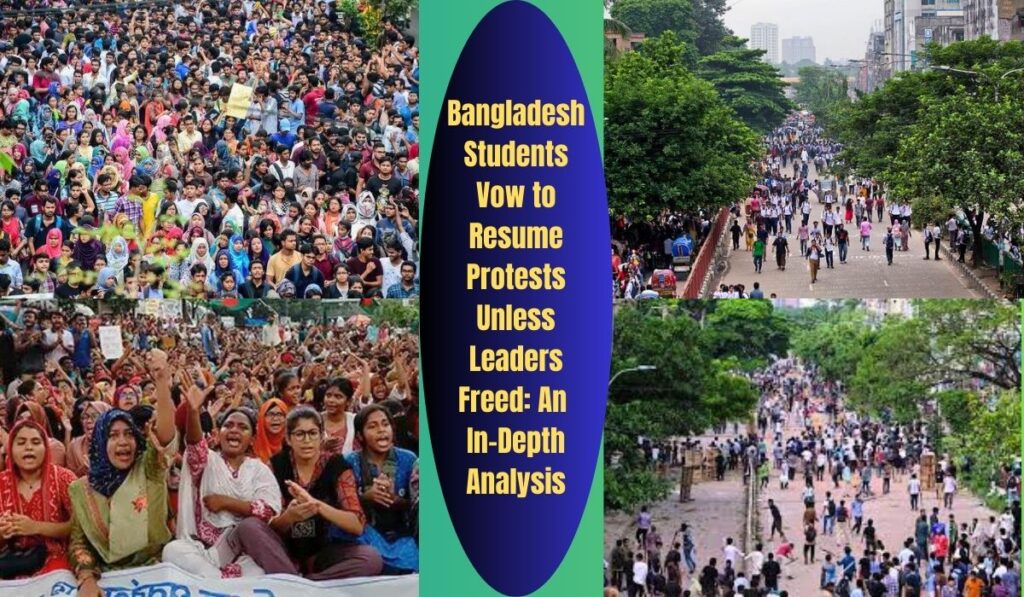Introduction
In recent weeks, Bangladesh has experienced significant unrest, with students at the forefront of the protests. These demonstrations were sparked by a controversial quota system for government jobs and resulted in a lethal police crackdown. This article provides a detailed analysis of the events leading to the protests, the government’s response, and the potential future implications.
Background
The Quota System
The protests began in response to the reintroduction of a quota system that reserves over half of all government jobs for certain groups. This move deeply upset many young graduates facing a severe employment crisis. According to government figures, around 18 million young Bangladeshis are currently out of work, making the job market highly competitive.
Students Against Discrimination
The group leading the protests, Students Against Discrimination, has been vocal in their opposition to the quota system. They argue that it unfairly advantages certain groups and undermines meritocracy. Their campaign against these civil service job quotas was the catalyst for the recent unrest.
The Protests and Government Crackdown
Initial Protests
The protests began peacefully but quickly escalated. The government responded with a heavy-handed approach, imposing a nationwide curfew and deploying army patrols to maintain order. Police actions resulted in at least 205 deaths, according to an AFP count of police and hospital data, marking one of the most significant upheavals during Prime Minister Sheikh Hasina’s 15-year tenure.
Arrests and Detentions
Thousands of protesters have been arrested since the unrest began, including several student leaders. Among those detained were Nahid Islam, the chief of Students Against Discrimination, and other senior members of the group. They were forcibly discharged from a hospital in Dhaka and taken into custody by plainclothes detectives.
Government Justifications
Home Minister Asaduzzaman Khan claimed that the detained student leaders were taken into custody for their own safety. In any case, he didn’t affirm whether they had been officially captured. This uncertainty has just powered further doubt and outrage among the dissenters.
Current Situation
Continued Curfew and Internet Blackout
Despite some easing of restrictions, a curfew remains in place. The government has progressively relaxed the curfew throughout the week, signaling a belief that order is being gradually restored. Telecommunications Minister Zunaid Ahmed Palak announced that the country’s mobile internet network would be restored soon, following an 11-day blackout at the height of the unrest. Fixed-line broadband connections had already been restored earlier in the week.
Demands of the Protesters
Abdul Hannan Masud, speaking on behalf of Students Against Discrimination, has demanded the release of detained leaders and the withdrawal of charges against them. He also called for visible actions against government ministers and police officers responsible for the deaths of protesters. Failure to meet these demands, Masud warned, would result in the resumption of protests.
Implications of the Protests
Political Impact
The fights address a critical test to Top state leader Sheik Hasina’s administration. Hasina, who has ruled Bangladesh since 2009 and recently won her fourth consecutive election, faces accusations from rights groups of misusing state institutions to maintain power and suppress dissent. The current unrest has highlighted these concerns, particularly regarding the government’s handling of opposition and protest movements.
Economic and Social Consequences
The protests and subsequent crackdown have disrupted daily life and business operations across Bangladesh. The employment crisis, a primary driver of the protests, remains unresolved, exacerbating tensions among the youth. The government’s approach to addressing these issues will be crucial in determining the country’s stability in the coming months.
Future of the Quota System
While the Supreme Court has reduced the number of reserved jobs, it has not entirely scrapped the quota system, falling short of the protesters’ demands. This partial concession may not be sufficient to quell the unrest, especially if the underlying employment crisis remains unaddressed.
Conclusion
The recent protests in Bangladesh, led by Students Against Discrimination, highlight significant issues within the country’s political and economic systems. The government’s response, including the lethal crackdown and mass arrests, has drawn widespread criticism and intensified calls for reform. As the situation develops, the demands of the protesters and the government’s willingness to address them will play a critical role in shaping Bangladesh’s future.
References
- “Bangladesh students vow to resume protests unless leaders freed.” AFP. Link to source
- “The Quota System and Its Implications.” Prothom Alo. Link to source
- “Sheikh Hasina’s 15-year Tenure.” The New York Times. Link to source
- “Employment Crisis in Bangladesh.” The Dhaka Tribune. Link to source
- “Students Against Discrimination.” Al Jazeera. Link to source
This comprehensive analysis aims to provide a clear understanding of the recent events in Bangladesh, their causes, and potential future outcomes, ensuring a well-structured and detailed exploration of the topic.

